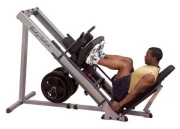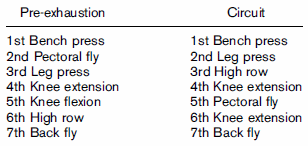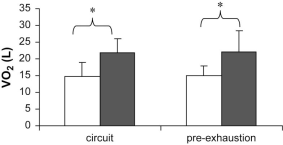|
Definition: "An ergogenic aid is any substance or phenomenon that enhances performance "
|
|
||||||||
09.12.2009 |
|
|
Light resistance training also raises post-training energy expenditure
According to some studies, you burn just as many calories by doing short intensive resistance training that focuses on your legs as you do in an hour-long heavy cardio session. This is because of the phenomenon that researchers call EPOC or excess postexercise oxygen consumption: raised energy expenditure after a training. After endurance training EPOC is minimal; after strength training it's considerable. According to a study done at the Brazilian Federal University of Rio Grande do Sul achieving a decent EPOC is easier than sports scientists have claimed.
The researchers got 8 female students to do two sessions of strength training and then measured their oxygen expenditure for a half hour afterwards. Both times the women did sets at 50-55 percent of their 1RM – the weight at which women could only just manage 1 extra rep. That meant they did 12 reps. In both training sessions the rest between sets was kept to a minimum. The women did the exercises in quick succession, and repeated the cycle 3 times.
The difference between the two training sessions was in the order of exercises. The term pre-exhaustion, used here below, is not an optimal choice. In bodybuilding, pre-exhaustion means first doing an isolation exercise for a muscle group, and then afterwards a multi-joint basic exercise. First you do the leg-extension, followed by the leg press – that's really what pre-exhaustion. But never mind – you understand the principle.
It made no difference whether the test subjects did their flies after doing their bench presses, or whether they gave their chest muscles a brief rest. The EPOC rose by the same amount during the first half hour after the training.
Therefore, the order in which you train is not a factor in EPOC, say the researchers. What’s more, you can also achieve an interesting EPOC even if you’re only training at 55 percent of your 1RM. "Therefore, individuals with limitations in relation to high loads could perform circuit training and pre exhaustion systems to obtain a higher EPOC and, consequently, higher energy expenditure."
Source:
More:
|
|




